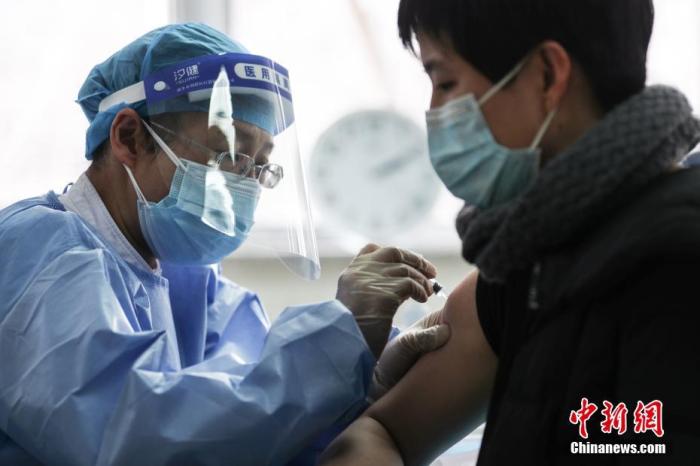China News Service, February 26. Wu Yuanbin, Director of the Department of Social Development and Technology of the Ministry of Science and Technology, introduced on the 26th that in terms of the development of new crown vaccines, there are currently 17 vaccines in clinical trials, of which 7 vaccines have entered phase III clinical trials, and 4 The vaccine has been put on the market conditionally and is being vaccinated for key populations across the country.
Data map: Medical staff inject vaccines for vaccinators.
Photo by China News Agency reporter Jiang Qiming
The State Council Information Office held a press conference on the 26th.
At the meeting, a reporter asked questions and said that since the outbreak of the new crown epidemic, scientific research has played an important role. What new progress has my country made in the research and development of vaccines and drugs?
What are the long-term plans for health technology support in the future?
Wu Yuanbin responded that since the outbreak of the new crown pneumonia, the Chinese science and technology community has established a scientific research team for the joint prevention and control mechanism of the State Council led by the Ministry of Science and Technology, focusing on viral etiology, detection technologies and products, clinical treatment and drugs, vaccine development, and animal model construction. In this main direction, we organized the nation’s elite scientific research forces to fully promote scientific research, and achieved a number of practical results that were applied in the fight against the epidemic.
From the first time sharing virus gene sequences, rapid screening of effective drugs, implementation of large-scale nucleic acid testing and the development and marketing of vaccines, China’s scientific research on epidemic prevention and control has demonstrated its “hard core power against epidemics”.
In terms of vaccine research and development, Wu Yuanbin pointed out that from the beginning, in order to maximize the success rate of research and development, my country has arranged five technologies for inactivated vaccines, nucleic acid vaccines, recombinant protein vaccines, adenovirus vector vaccines and attenuated influenza virus vector vaccines. Route research in parallel.
At present, 17 vaccines are undergoing clinical trials, of which 7 vaccines have entered phase III clinical trials, 4 vaccines have been conditionally listed and are being vaccinated to key populations across the country.
Regarding drug research and development, Wu Yuanbin said that from the beginning, the focus was on strengthening the screening of effective drugs. A total of 11 types of drugs, including relevant Chinese medicine prescriptions, were included in the treatment plan, which played a role in clinical treatment, blocking the development of mild to severe, and reducing the mortality rate. Played an important role.
In the development and application of new treatment technologies, including convalescent plasma, stem cells and other new technologies, significant results have been achieved in the treatment of severe and critically ill patients.
In terms of the research and development of specific drugs, the focus is on promoting the research and development of neutralizing antibodies. At present, 7 single varieties and 1 combination drug have been approved for clinical trials.
In addition, Wu Yuanbin introduced the next related work: First, continue to promote scientific research on epidemic prevention and control, strengthen the research and judgment of the epidemic development trend and risk warning, accelerate the iterative upgrade of vaccine and antibody drug research and development, detection technology and products, and continue to track virus mutations The impact on vaccines, drugs, and testing reagents provides strong scientific and technological support for epidemic prevention and control.
The second is to strengthen the long-term layout of life and health.
Strengthen the construction of health science and technology innovation capacity, establish a scientific research system and rapid support mechanism combining peace and war, focus on key areas such as epidemic prevention and control, major disease prevention, reproductive health, and population aging, and increase the deployment of scientific research tasks.
The third is to accelerate the completion of shortcomings in pathogenic research and high-end medical equipment research and development, so that technological innovation can better protect people's lives and health.

